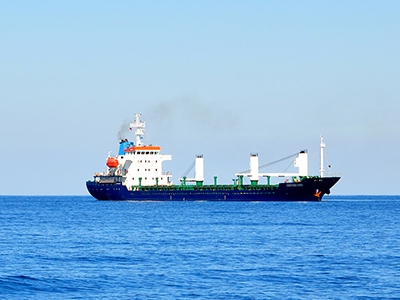Class notation granted to vessels which contribute in environmental performance
International classification society RINAhaslauncheda new goal-based classvoluntarynotation, GREEN PLUS. The voluntary notation will be based on an environmental performance index which covers all aspects of the vessel’s impact on the environment, including carbon emissions.
RINA’s GREEN STAR notation has become a watchword for environmental excellence in shipping, anticipating the requirements of MARPOL and other relevant legislation, and placing owners and operators in an advantageous position. Now, with GREEN PLUS, RINA introduces a new class notation only to be granted to new vessels which make a significant investment in design solutions, onboard equipment, and operational procedures which contribute to an improvement in environmental performance beyond the minimum levels required by regulation.
Design solutions and onboard equipment include anything which reduces the risk of pollution, or which lowers fuel consumption and air emissions. Innovative engine design, alternative fuels, high-efficiency propellers, optimal hull design and bio-degradable oils all fall into these categories.
Operational procedures covered by a GREEN PLUS notation include those which ensure that design solutions and onboard equipment are correctly used, voyage planning programmes resulting in reduced fuel consumption and emissions, or training courses designed to increase the environmental awareness of officers and crews.
Antonio Pingiori, managing director of RINA’s Marine Division, explains:
“GREEN PLUS introduces optional and voluntary dimensions to the concept of environmental certification. MARPOL and other regulations are sometimes unable to follow technical and technological developments and keep up with public expectations, and significantly, they do not yet take account of carbon emissions. The industry needs a notation which demonstrates that the ship meets public aspirations for a lower overall environmental impact. The large number of design solutions, onboard equipment, and operational procedures available in today’s industry, together with the general evolution in technological development, dictate a goal-based, rather than a prescriptive, approach. That is why GREEN PLUS has been designed with sufficient in-built flexibility to allow designers the latitude to choose those tools which they deem to be most appropriate, subject to achieving an assigned value in an environmental index. The contribution of innovative design solutions to the environmental index will be evaluated by RINA on a case-by-case basis.“
RINA envisages that it will be possible to transfer existing ships from GREEN STAR to GREEN PLUS notation, assuming that the requirements relating to onboard equipment, operational procedures and solutions can be satisfied. “But,” says Pingiori, “the assignment of the new notation will always be linked to investment in onboard equipment which allows continuous control and measurement of selected parameters. In keeping with the spirit of GREEN PLUS, qualification under the environmental index will not be achieved by operational procedures alone.“
Pingiori concludes, “As its name suggests, GREEN PLUS is taking environmentally responsive shipping one step further than it has been before. RINA is setting green standards for others to follow.“
Source: RINA




























































